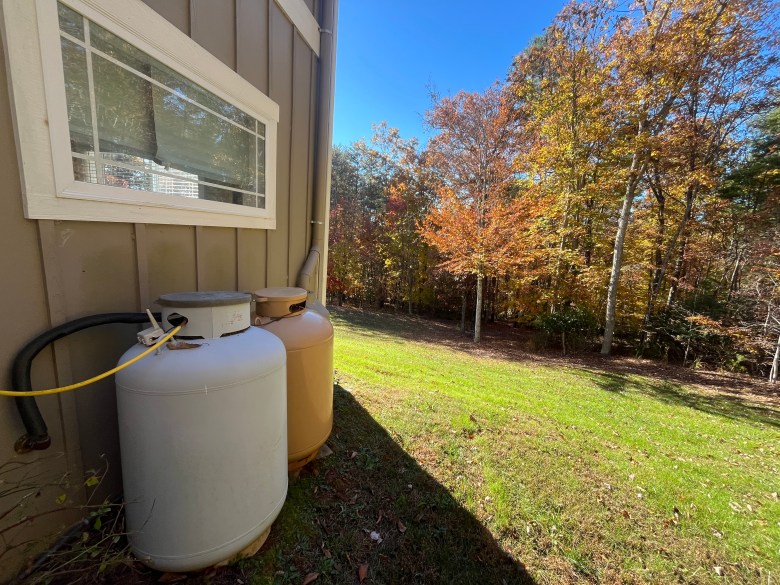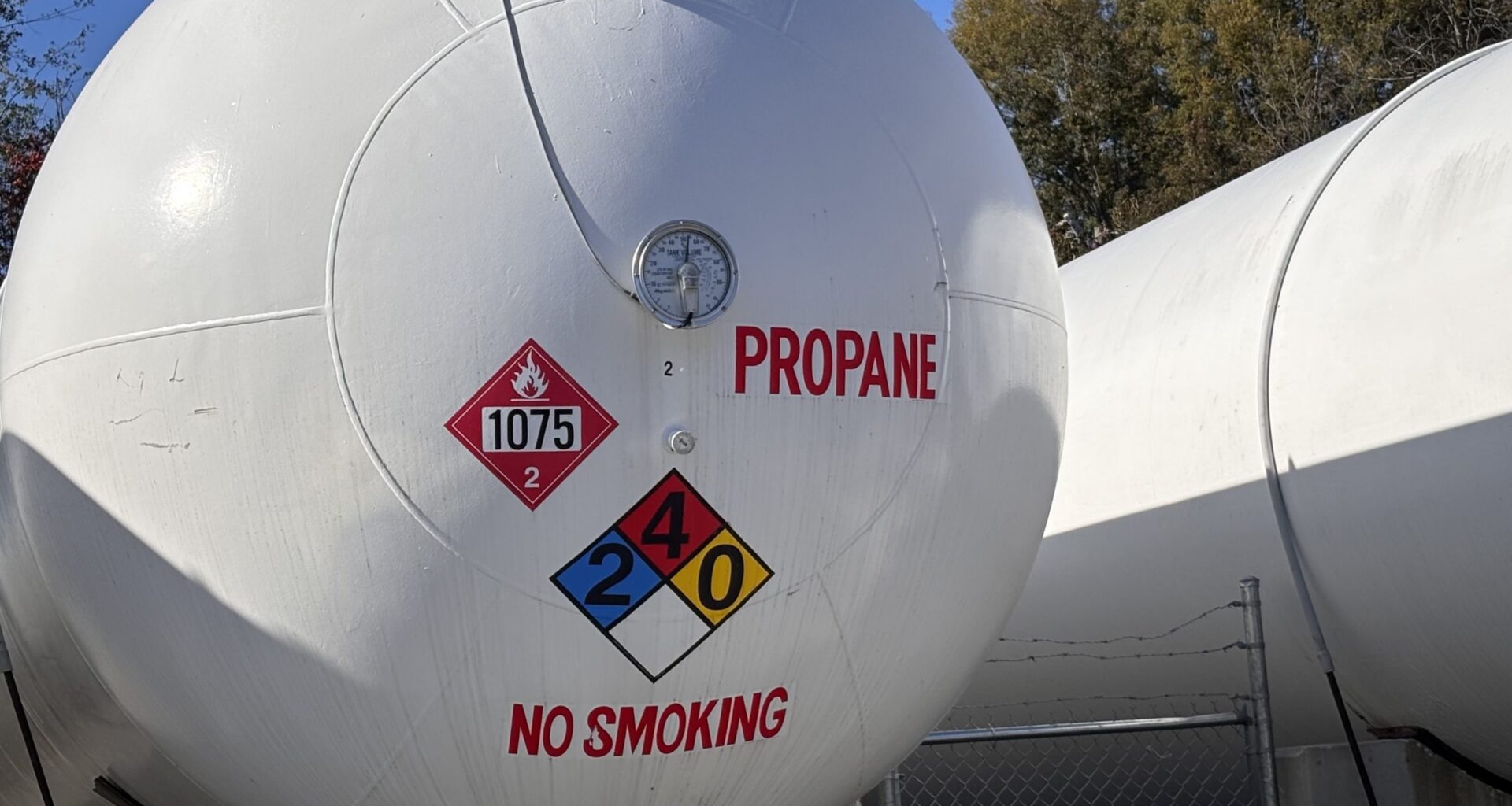Today’s round of questions, my smart-aleck replies and the real answers:

Question: Regarding propane prices, I think there are two main issues that consumers should be aware of, and companies should be aware that consumers are aware of: The retail prices are nearly double to almost quadruple the wholesale price. Some companies charge double what others do, an upcharge of nearly $2 a gallon. For a typical 300-gallon fill twice a year, that would be nearly $600! Twice! Note, companies typically charge fees associated with the fill, some legally required; these are usually in the $10-25 range and are not included in the per-gallon charge. Companies rely on general consumer ignorance to charge whatever they want.
My answer: You gotta admit, historically it’s not a bad business strategy.
Real answer: First of all, my apologies to this reader for taking way too long to answer this.
Secondly, when I checked on prices with multiple local companies about two weeks ago, I also found a wide variation.
It’s important to note that gas companies often will offer a “first fill” rate that is way cheaper than the ongoing rate that’s going to come after you empty that first tank. Also, prices vary for customers who lease a tank versus those who own one.
But here’s a snapshot of pricing per gallon on Oct. 20, with most companies quoting a 100-gallon minimum, along with small deliveries fees in the range my reader quoted and the scenario that I own my own tank:
Amerigas: $2.05 a gallon (first fill). Next fill would be $2.31 per gallon, according to an Amerigas online quote.
Blossman gas: $3.49 a gallon (phone quote).
Ferrellgas: $1.94 per gallon (first fill, phone quote). On Nov. 3, the phone attendant said the market rate is $2.26 a gallon after the first fill is done.
Suburban: $1.99 per gallon first fill, then prices fluctuate with the market, according to a phone attendant.
Superior/Freeman: $1.99 per gallon. The phone attendant said Nov. 3 that the company has recently restructured its pricing and is trying to keep subsequent orders “as close to that $1.99 as possible.”
For official company responses, I had to reach out to corporate spokespersons. I’m quoting those who responded.
“For the prices you were quoted, I would advise asking if those are first-fill specials or special customer-owned tank rates, and then what the future rates your propane deliveries would be billed at,” Emily Willis at Blossman Gas said.
Regarding fluctuations in pricing, Willis noted that propane “is a byproduct of domestic natural gas processing and crude oil refinement.
“Because of that, prices are affected by many factors, including the price of crude oil and natural gas, propane production at the time of purchase, the domestic demand, which is generally related to the weather — cooler weather increasing demand for home and commercial heating — and other factors,” Willis said via email.
 The U.S. Energy Information Administration tracks propane prices by region and average. In mid-October, the market price for our area, the Lower Atlantic region, was $3.35. // Watchdog photo by Keith Campbell
The U.S. Energy Information Administration tracks propane prices by region and average. In mid-October, the market price for our area, the Lower Atlantic region, was $3.35. // Watchdog photo by Keith Campbell
Willis also noted that the U.S. Energy Information Administration tracks propane prices by region and average. As of Oct. 16, the market price for our area, the Lower Atlantic region, was $3.35.
“Propane companies’ prices vary but will generally fall within a range of the average market price of propane,” Willis said. “Many propane companies will offer a special ‘First Fill Pricing’ for new customers, or customers who are not leasing a tank from them, which will be a reduced price per gallon for the first time they deliver to a tank or set up a new tank.”
“After you have redeemed this promotion, the pricing per gallon would increase to something that is more reflective of the average market price,” Willis continued. ““In short, it’s a great marketing program!”
Willis noted that Blossman “does not generally participate in first-fill specials because we like to provide our customers with the security and predictability of knowing their energy costs.”
I’ll note that the customer is right about wholesale pricing versus “residential” pricing, the way EIA lists it. On Nov. 3, wholesale pricing for our region was listed at 84 cents a gallon, compared with $3.35 for the residential market.
The Ferrellgas media relations department noted that propane prices vary because of supply and demand, transportation costs, and crude oil prices.
“Each company’s costs and service models are a little different too, which is why prices can vary within the same community,” Ferrellgas said in its statement.
Energy Information Administration spokesperson Chris Higginbotham said the administration “can’t get into company-specific considerations, but we can give a high-level outlook.”
“Propane prices fluctuate much more than prices of gasoline or natural gas,” Higginbotham said via email. “If you look at the different scenarios in our Winter Fuels Outlook forecasting the total cost of heating a home with propane this winter, you’ll see a much wider range in the cost scenarios than in natural gas or electricity.”
Higginbotham noted that prices are going to vary locally, depending on the company.
“At the local level, you’re likely to see some variation based on company size — larger companies may be able to sell propane less expensively because of scale,” Higginbotham said. “There may also be differences in what’s included in the cost. For instance, do each of the prices quoted include delivery? Do any include a plan for regular or multiple deliveries? Are any of the companies more focused on delivering to rural areas, which can be more cost-intensive than urban or suburban deliveries, especially in the Appalachian Mountains?”
I often get a similar question about why gasoline prices vary so much within our geographic market. Sometimes, market forces are in play, including intense competition, but sometimes, stations essentially charge what they can.
In short, buyer beware! And do your research.
![]()
Question: There’s no doubt that climate change is real. One of the signs that point to the increased temperatures on the planet are rising sea levels. Every community and every geological formation are listed as having an altitude regarding feet above sea level. For example, Asheville is listed as being 2,134 feet above sea level. I’m curious at what point with rising sea levels that designations of feet above sea level will have to be changed. At what point will Asheville be listed as 2,133 feet above sea level? How are feet above sea level measured? Is it based on a planetary sea level average? Is it based on sea level in a more regional location?
My answer: Maybe this explains the sinking feeling I’ve had about our country over the past 10 months or so.
Real answer: David Easterling, founder of Future Climate LLC and a former longtime research meteorologist with the National Centers for Environmental Information in Asheville (part of NOAA), said to not expect listing changes anytime soon.
“The answer to your first question is yes, technically they will change, but in everyday practice likely not,” Easterling said. “I doubt new signs and information about the elevations in publications will change.”
 David Easterling, founder of Future Climate LLC and a former longtime research meteorologist with the National Centers for Environmental Information in Asheville (part of NOAA), said that while area mountain elevations will technically change as sea levels rise, don’t expect to see new public signage or listings anytime soon. // Watchdog photo by Dan DeWitt
David Easterling, founder of Future Climate LLC and a former longtime research meteorologist with the National Centers for Environmental Information in Asheville (part of NOAA), said that while area mountain elevations will technically change as sea levels rise, don’t expect to see new public signage or listings anytime soon. // Watchdog photo by Dan DeWitt
Sealevelrise.org notes that, “On the East Coast, the sea is rising by about one inch every three years.” So this is a slow process.
As far as how elevation above sea level is measured, Easterling said that involves the “geoid, which is a model of global mean sea level used to measure surface elevations precisely.” You can read more about the geoid here. (Warning! This gets quite technical.)
“Essentially, this is a model of the ocean surface if one removed all tides and currents and accounted for variations in gravity (yes, the pull of gravity does vary around the world) and allowed the sea surface to settle into a constant elevation,” Easterling said. “The geoid model is not a perfect sphere since the Earth is not a perfect sphere — it bulges at the equator due to the effects of the Earth’s rotation.”
The geoid is extended under the continents to allow precise measurements of elevation.
So, will elevations of mountains change?
“The short answer is yes, for two reasons: more precise measurements, including sea level rise and recalculations of the geoid, and tectonic forcing,” Easterling said. “For example, due to a recent powerful earthquake, Mount Everest has shrunk by about 1 inch.”
Easterling also noted that satellites measure elevation today, which allows much more precise measurements than the old way using geometry and distances.
I asked the North Carolina Division of Parks and Recreation if we’d be seeing official elevation changes for prominent mountain peaks such as Mt. Mitchell, but it referred me to the U.S. Geological Survey, which makes those determinations. I’ve gotten no answer, thanks to the government shutdown.
But if our government ever reopens and it responds, I’ll let you know — if that happens before we’re all underwater.
Asheville Watchdog welcomes thoughtful reader comments on this story, which has been republished on our Facebook page. Please submit your comments there.
Asheville Watchdog is a nonprofit news team producing stories that matter to Asheville and Buncombe County. Got a question? Send it to John Boyle at jboyle@avlwatchdog.org or 828-337-0941. His Answer Man columns appear each Tuesday and Friday. The Watchdog’s reporting is made possible by donations from the community. To show your support for this vital public service go to avlwatchdog.org/support-our-publication/.
Related

